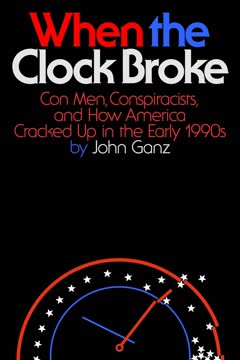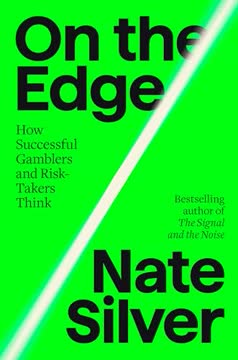Key Takeaways
1. The Idealist: Early Ambition and Principles
In those pre-World War I years of optimism, of reform, of idealism, Robert Moses was the optimist of optimists, the reformer of reformers, the idealist of idealists.
Early life and education. Robert Moses, born into a wealthy German-Jewish family in 1888, was shaped by the strong will and philanthropic spirit of his mother, Bella Moses. Educated at elite institutions like Yale and Oxford, he excelled academically and developed a deep belief in public service and the importance of meritocracy. His early writings and actions reflected a passionate idealism, advocating for reform based on truth and logic.
Fighting for ideals. At Yale, Moses challenged the established social hierarchy and fought for merit-based recognition, even defying powerful figures like athletic director Walter Camp to organize minor sports. His Oxford thesis, The Civil Service of Great Britain, championed a meritocratic civil service system, though it also revealed an early belief in an intellectual aristocracy. He was "burning up with ideas" for civic improvements, from small park shelters to grand waterfront highways.
First taste of reform. Joining the Bureau of Municipal Research, a hub of Progressive reform, Moses dedicated himself to civil service reorganization, believing that efficiency and logic would prevail over patronage. He devised a complex grading system and tirelessly argued for its adoption, facing down furious municipal employees tied to Tammany Hall. Despite his brilliance and dedication, his early efforts were largely thwarted by the entrenched political machine.
2. The Reformer's Disillusionment: Power as the Essential Tool
ideas—dreams—were useless without power to transform them into reality.
Defeat and realization. Moses's idealistic fight for civil service reform ended in bitter defeat in 1918. His system was discarded, and he found himself out of work. This experience shattered his belief that truth and logic alone could achieve change. He realized that without power, even the most brilliant ideas and passionate idealism were ineffective.
A new understanding. The failure taught Moses a crucial lesson: to build his dreams, he needed power. The rest of his life became a relentless pursuit of power, employing imagination, iron will, and determination to amass it. This marked a fundamental shift from the idealist who believed in the inherent rightness of his ideas to a pragmatist focused on the means necessary to achieve them.
The path to power. His opportunity came through Belle Moskowitz, who recognized his talent and brought him into the orbit of Governor Al Smith. Working for Smith's Reconstruction Commission, Moses learned the realities of practical politics and the importance of compromise. He began to see that political maneuvering, previously disdained, was essential for getting things done.
3. The Rise to Power: Mastering the Political Game
"Ernie," he said, "Al Smith listens to me."
Alliance with Al Smith. Moses formed a unique and powerful alliance with Governor Al Smith, a master politician from the Lower East Side. Despite their vastly different backgrounds, Smith recognized Moses's brilliance and dedication, while Moses saw in Smith the political force needed to turn his dreams into reality. Smith became Moses's mentor in the art of practical politics.
Learning the game. Working closely with Smith, Moses learned how to navigate the political landscape, how to deal with legislators, how to use the press, and how to leverage political connections. He observed Smith's mastery of negotiation, compromise, and the strategic use of power. This period transformed Moses from a naive idealist into a shrewd political operator.
Early successes. With Smith's backing, Moses began to achieve tangible results. He played a key role in drafting legislation for state administrative reorganization and prison reform. He conceived and began planning for a vast state park and parkway system, particularly on Long Island. Smith's support provided the "executive support" Moses had learned was indispensable.
4. The Use of Power: Building the Physical City
To build his highways, Moses threw out of their homes 250,000 persons—more people than lived in Albany or Chattanooga, or in Spokane, Tacoma, Duluth, Akron, Baton Rouge, Mobile, Nashville or Sacramento.
The vision takes shape. Armed with power, Moses began to build on an unprecedented scale. His vision encompassed vast networks of highways, bridges, and parks that would physically reshape New York City and its suburbs. He saw the potential in undeveloped land and marshlands, transforming them into public spaces and transportation arteries.
Methods of construction. Moses employed ruthless efficiency and political maneuvering to achieve his goals. He used the power of eminent domain to condemn land and evict residents, often with little regard for the human cost. He bypassed bureaucratic hurdles and ignored opposition, driven by his singular focus on getting projects built.
Physical transformation. The result was a dramatic alteration of the urban landscape.
- Miles of expressways and parkways crisscrossed the region.
- Major bridges connected boroughs and islands.
- Vast parks and beaches were created from undeveloped land and landfills.
- Public housing projects and urban renewal areas reshaped neighborhoods.
His physical impact on the city was undeniable and immense.
5. The Authority: A New Source of Unchecked Power
Operating through an authority, Moses could keep the public from finding out what he was doing...
The power of the authority. Moses recognized the potential of public authorities as instruments of power largely independent of traditional democratic controls. By drafting legislation that granted these entities broad powers to issue bonds, collect tolls, and operate outside the direct oversight of elected officials, he created a parallel government structure.
Independence from oversight. Authorities could:
- Issue bonds based on revenue, not tax dollars.
- Operate with secrecy, their records not subject to public scrutiny.
- Make their own rules and regulations with the force of law.
- Exercise eminent domain and other governmental powers.
This structure allowed Moses to bypass the political processes and public accountability that had frustrated his early reform efforts.
Consolidating control. Moses strategically consolidated control over multiple authorities, particularly the Triborough Bridge and Tunnel Authority, making himself the central figure in a vast, financially powerful empire. This control provided him with immense resources and leverage to pursue his building agenda without significant interference from mayors or governors.
6. The Human Cost: Neighborhoods and People Displaced
He tore out the hearts of a score of neighborhoods, communities the size of small cities themselves, communities that had been lively, friendly places to live, the vital parts of the city that made New York a home to its people.
Displacement and destruction. Moses's relentless pursuit of large-scale public works came at a devastating human cost. His highways and urban renewal projects required the displacement of hundreds of thousands of residents, often from stable, vibrant communities. These neighborhoods were obliterated to make way for new construction.
Impact on the poor and minorities. The burden of displacement fell disproportionately on poor and minority residents.
- Tens of thousands of poor, nonwhite persons were evicted.
- Replacement housing was often inadequate or unaffordable for the displaced.
- Relocation practices were frequently callous and inhumane.
His projects contributed to the segregation and deterioration of existing slums, creating new ones in the process.
Loss of community. Beyond the physical displacement, Moses's projects destroyed the social fabric of neighborhoods. Long-established communities with strong social ties were fragmented and dispersed, leading to a loss of identity and belonging for their residents. The focus on large-scale physical improvements often overshadowed the needs and desires of the people living in the affected areas.
7. The Loss of Power: Reputation Tarnished, Influence Wanes
But on it, he lost his most cherished asset: his reputation.
The turning tide. After decades of near-absolute power and widespread public adulation, Moses's image began to crack. His ruthless methods, once excused as necessary for progress, became increasingly visible and less palatable to the public and the press. Controversies surrounding projects like the Tavern-on-the-Green parking lot and the Battery Bridge exposed his arrogance and disregard for public opinion.
Public disfavor. The press, which had largely built the Moses myth, began to turn against him, portraying him as a destroyer of parks and a man driven by ego rather than public service. His attempts to silence critics and control the narrative backfired, further damaging his reputation. The public, once his staunchest supporter, began to see him as a symbol of unchecked power and insensitivity.
Power challenged. While his authority structure remained legally intact, the loss of public support weakened his political leverage. Mayors and governors, though still constrained by the legal framework of the authorities, became more willing to challenge his decisions and curb his influence. The "Battle of Central Park" marked a turning point, demonstrating that even in his stronghold, public outcry could force a retreat.
8. The Legacy: A City Shaped, A Question Remains
It is possible to say only that it would have been a different city.
A city reshaped. Robert Moses left an indelible physical mark on New York City and its suburbs. His network of roads, bridges, and parks fundamentally altered the region's landscape and infrastructure. He was, in terms of physical construction, America's greatest builder.
The enduring question. Despite the magnitude of his achievements, questions remain about the ultimate value of his legacy. Did his projects improve the quality of life for the city's residents, or did they exacerbate existing problems like congestion, displacement, and social inequality? The city he shaped is a complex mix of progress and despair.
The nature of power. Moses's career serves as a powerful case study in the nature of power in a democracy. He demonstrated that immense power can be amassed and wielded outside traditional democratic structures, and that such power can be used to achieve monumental physical change. But he also demonstrated the potential costs of such power when it is unchecked by public accountability and humanistic concerns.
A different city. New York City would undoubtedly have been a different place without Robert Moses. Whether it would have been a better place is a question that history may never definitively answer. His legacy is a testament to the power of one man's will to shape the world around him, for better or for worse.
Last updated:
Review Summary
The Power Broker is widely praised as a monumental biography of Robert Moses, detailing his rise to power and influence over New York City's infrastructure. Readers appreciate Caro's meticulous research, engaging writing, and ability to weave complex political machinations into a compelling narrative. The book is seen as a study of power itself, revealing how Moses shaped the city through parks, highways, and bridges, often at the expense of communities and public transit. While some find its length daunting, most consider it an essential read for understanding urban planning and political power.
Similar Books






Download PDF
Download EPUB
.epub digital book format is ideal for reading ebooks on phones, tablets, and e-readers.






